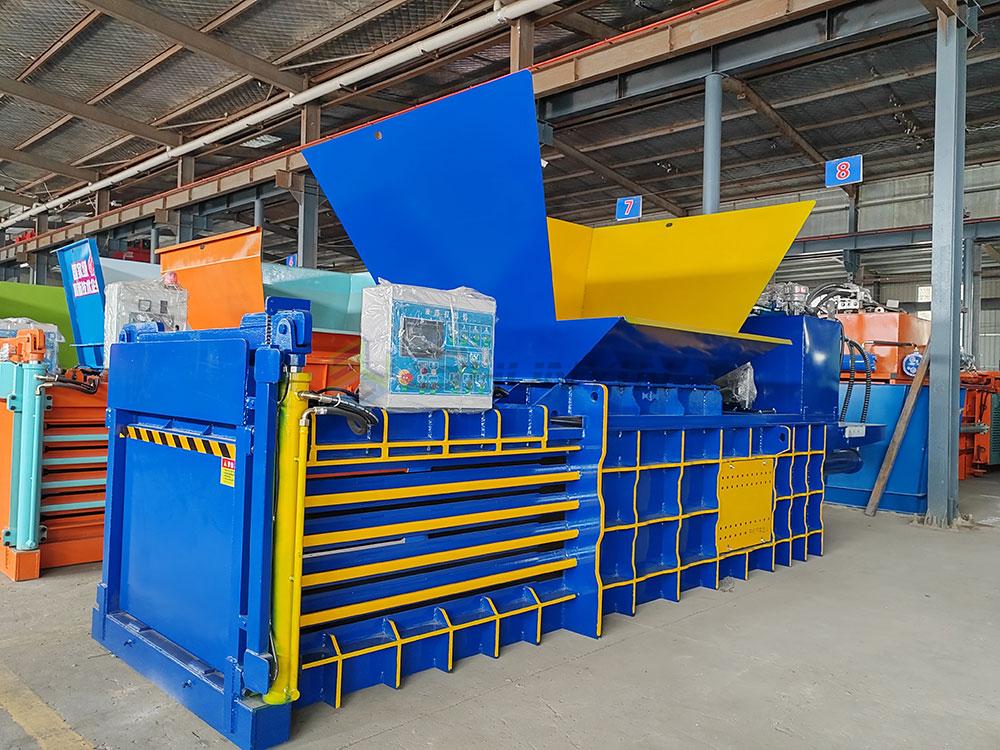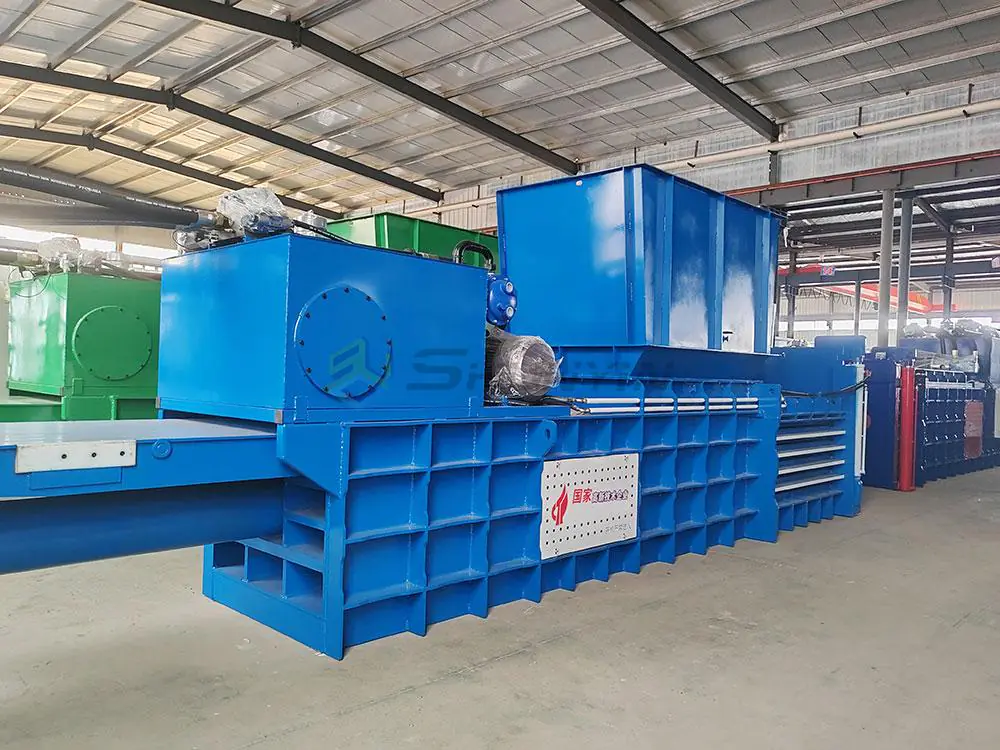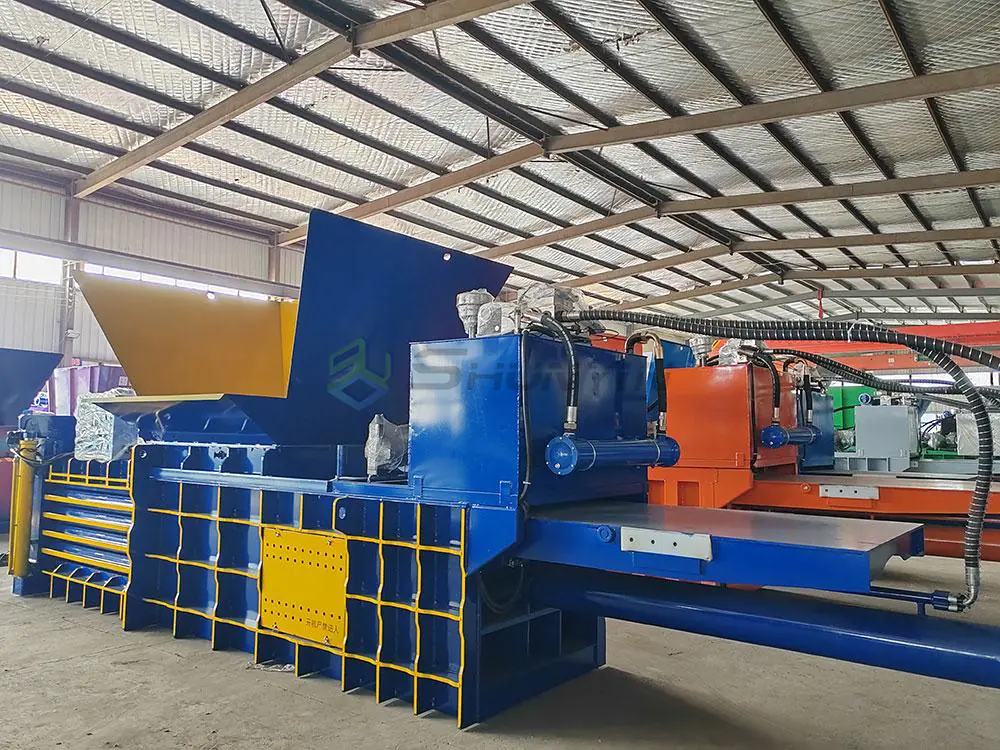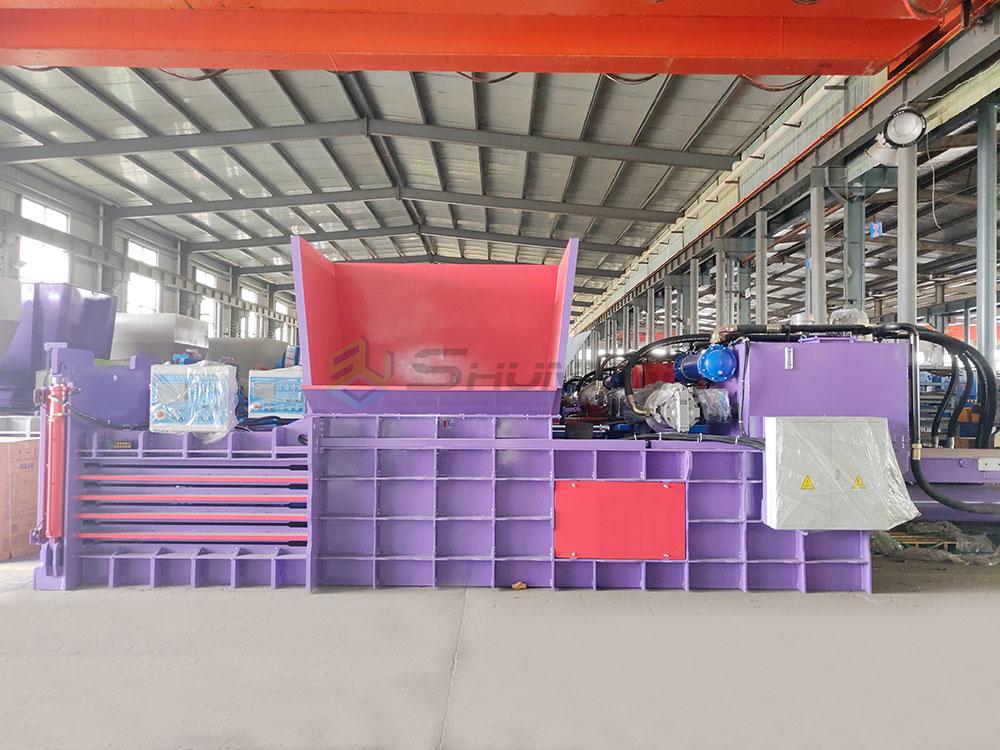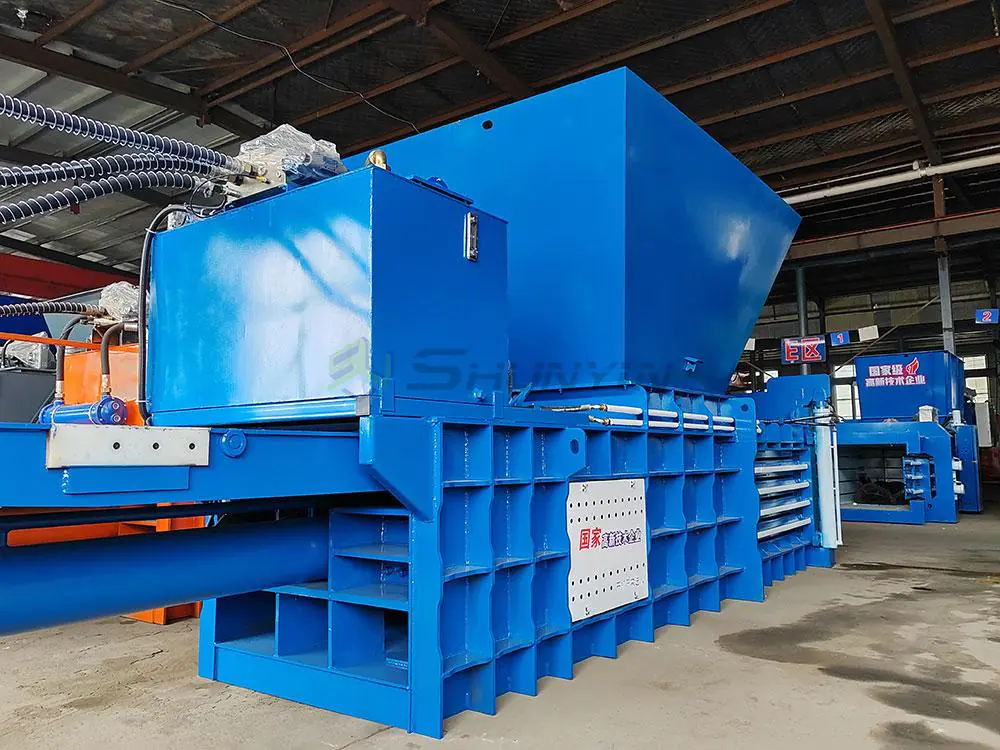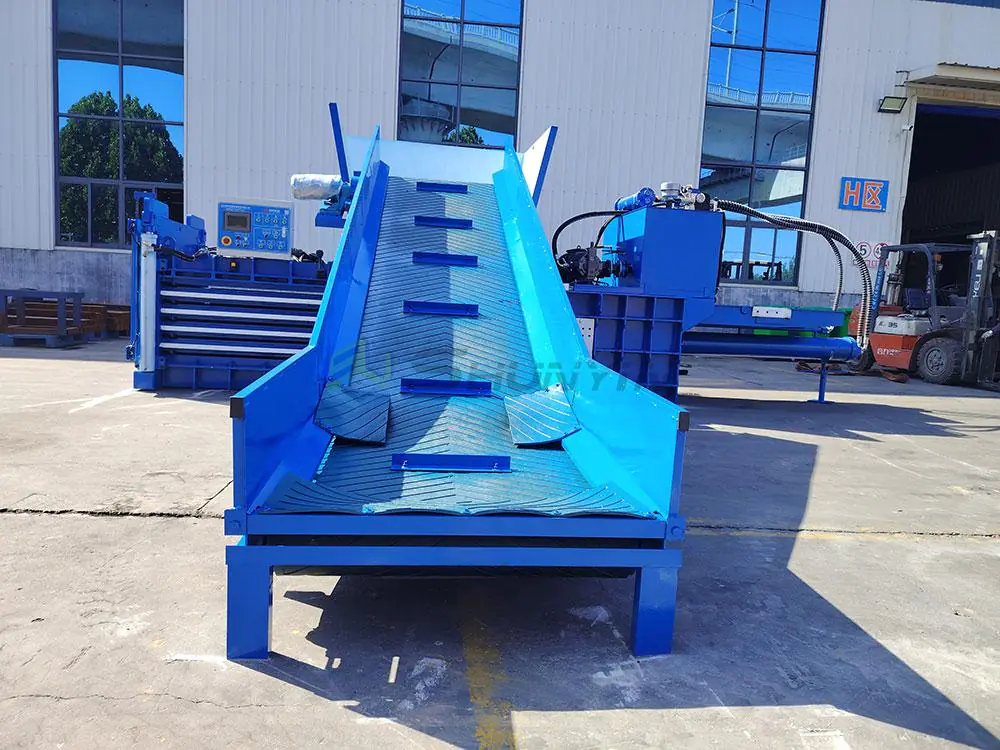
Having installed over 500 balers worldwide, I’ve witnessed how wrong baler choices cripple profitability. Choose between heavy-duty and standard based on your material volume and cost goals.
Heavy-duty balers provide greater long-term savings for operations exceeding 20 tons/day, lasting 15-20 years with 30% lower operating costs, while standard models offer better ROI under 10 tons/day. Key factors: hydraulic cycles/hour, compression PSI needs, and maintenance schedules – heavy-duty balers cut downtime expenses but require higher upfront investment.
Let’s explore lifespan differences and operational trade-offs to match your needs. Contact our experts for personalized analysis: https://lemonchiffon-shark-638535.hostingersite.com/contact/.
What is the lifespan of a baler?

Last month, a Canadian recycler replaced their third baler in eight years – lifespan determines your total ownership cost. Proper maintenance prevents early failures.
Baler lifespans range from 5-7 years for standard models to 15-20 years for heavy-duty units, determined by frame thickness, hydraulic quality, and maintenance routines. Key longevity factors include cylinder cycles (50,000+ for heavy-duty), daily operating hours, and material abrasiveness.
Understanding Longevity Determinants
Critical Component Durability Comparison
| Component | Standard Baler | Heavy-Duty Baler | Failure Impact |
|---|---|---|---|
| Hydraulic Cylinder | 20,000 cycles | 75,000+ cycles | Production stoppage |
| Main Frame | 8-12mm steel | 15-20mm steel | Structural deformation |
| Press Plates | S355 steel | Hardox 450 steel | Bent plates & uneven bales |
| Control System | Basic PLC | IP67 rated industrial PLC | Electrical failures |
| Hoses & Fittings | Standard hydraulic | 5,000 PSI burst rating | Fluid leaks & downtime |
Our factory uses ultrasonic thickness testing on every heavy-duty frame weld. This catches weak points before shipping that could cause failures later.
Maintenance Protocol Impact Matrix
| Maintenance Activity | Frequency | Lifespan Impact | Cost Savings |
|---|---|---|---|
| Hydraulic Oil Replacement | 2,000 hours | +3 years | $14,000 in repairs |
| Cylinder Seal Inspection | Monthly | Prevent major rebuilts | Save $3,500/yr |
| Frame Bolt Torque Check | Quarterly | Prevent warping | Prevent $8k straightening |
| PLC System Diagnostics | Bi-weekly | 40% electrical issues | $120/hour downtime |
| Safety System Test | Before each shift | Avoid OSHA violations | Up to $13k fines |
Toronto-based Lambert doubled his baler’s life simply by scheduling quarterly professional inspections. His maintenance logs showed 73% fewer unplanned breakdowns.
Material Type Abrasion Analysis
Paper/Cardboard Operations
- Standard balers: Optimal 7-9 year lifespan
- Wear patterns: Roller surface degradation
- Annual cost: $2,800 maintenance average
Metal/Construction Debris
- Heavy-duty mandatory
- Hardox plates required
- Abrasion resistance: Triple standard steel
- Cost comparison: Standard fails in <3 years
What is the difference between vertical and horizontal balers?

Last year’s client confusion still haunts me – a bottling plant ordered verticals but needed horizontals. Understand core differences.
Horizontal balers process 5-8 tons/hour automatically, creating uniform high-density bales with minimal labor, while vertical balers require manual loading and output inconsistent bales at 1-2 tons/hour. Horizontal systems suit high-volume operations; verticals fit space-limited locations needing occasional recycling.
Operational Comparative Analysis
Throughput and Labor Requirements
| Metric | Horizontal Baler | Vertical Baler |
|---|---|---|
| Hourly Output | 4-10 tons | 0.5-2 tons |
| Operator Requirements | 0.5 FTE | 1-2 FTEs |
| Bale Consistency | 98% density uniformity | 60-70% variation |
| Loading Mechanism | Conveyor or grapple | Manual chute |
| Bale Weight Range | 400-1200kg | 50-300kg |
Singapore recycling centers switched to horizontal balers with conveyor feeds, reducing staffing needs by 4 FTEs per shift.
Space and Installation Specifications
Horizontal Systems
- Minimum dimensions: 15m x 6m
- Foundation requirements: Reinforced concrete
- Conveyor integration: Essential for efficiency
- Overhead crane requirements: 5-ton capacity minimum
Vertical Systems
- Footprint advantage: Fits 3x3m spaces
- Utility requirements: Standard 220V single-phase
- Mobility options: Wheel kits available
- Height clearance: 5-6 meter ceilings
Cost-Benefit Breakdown by Industry
Plastics Recycling Facility
| Factor | Horizontal | Vertical |
|---|---|---|
| Initial Investment | $72,000 | $28,000 |
| Annual Labor | $18,000 | $65,000 |
| Tonnage Processed | 5,400 tons | 1,600 tons |
| ROI Period | 14 months | Never reached |
What are some advantages of a large round baler over a conventional square baler?

During my Nebraska visit, hay farmers explained why round balers transformed their operations – reduced labor by 70%.
Large round balers provide 40% higher field efficiency, reduce wrapping labor by 4-5 minutes/bale, offer better weather protection, minimize spoilage by 18-25%, and require 22% less plastic wrap compared to square balers. Their cylindrical shape sheds water naturally while enabling flexible stacking.
Agricultural Efficiency Dynamics
Field Operation Timings
| Activity | Round Baler | Square Baler | Time Savings |
|---|---|---|---|
| Bale Formation | 45-60 seconds | 90-120 seconds | 50-100% faster |
| Wrapping Time | 30-40 seconds | 4-5 minutes | 75% reduction |
| Field Turning | Radius half of equipment | Multiple passes required | 2x less turns |
| Unloading Process | Automatic ejection | Manual removal | 3-minute/bale saved |
Lambert’s Canadian ranch transitioned to round balers, cutting harvest staffing requirements from eight to four season workers.
Weather Protection and Loss Prevention
Moisture Management
- Round bale surface: Sheds 80% precipitation
- Square bale edges: Absorb moisture at corners
- Drying time: Round bales dry 60% faster after rain
- Internal temperature: Round balers maintain 8°C cooler
Spoilage Patterns
| Storage Method | Round Bales | Square Bales |
|---|---|---|
| Outdoor ground contact | 15-18% loss | 35-40% loss |
| Covered without wrap | 8-10% loss | 18-22% loss |
| Fully wrapped | <4% loss | <8% loss |
| Rot-resistant zone | Inner 50% protected | Corner vulnerability |
Logistics Efficiency Metrics
Transportation
- Trailer utilization: 27% better cube efficiency
- Weight distribution: Stable on uneven roads
- Loading speed: 40 bales/hour vs. 28/hour
- Special equipment: No bale squeezes needed
Our Japanese clients transport round bales stacked pyramid-style, reducing trips by 15% compared to square bale shipments.
Is a vertical baler a confined space?

Three years ago, an Ohio worker was trapped inside a vertical baler – never risk OSHA violations. Understand compliance requirements.
Vertical balers qualify as confined spaces under OSHA standards when chamber depth exceeds 4ft or access ports restrict exit, requiring formal entry procedures. Horizontal balers avoid these regulations with side-loading designs and unrestricted operator movement around compression zones.
Regulatory Compliance Framework
OSHA Confined Space Criteria
| Measurement | Threshold | Testing Method | Vertical Baler Risk |
|---|---|---|---|
| Entrance Size | Diameter <48" | Access point dimension | Loading chute commonly 36" |
| Internal Depth | >4ft vertical fall | Drop measurement | Chambers typically 5-7ft |
| Restricted Egress | One escape route | Path obstruction analysis | Ram mechanism blocks exit |
| Atmospheric Hazards | Oxygen <19.5% | Air monitoring | Compressed material off-gassing |
| Mechanical Hazards | Moving parts | Lockout-tagout audit | Ram can descend at 2ft/second |
Toronto facilities face $25k fines for non-compliance. We provide factory-installed proximity sensors that activate machine lockouts during entry attempts.
Compliance Implementation Path
Step 1: Confined Space Classification
- Permit-Required Confined Space (PRCS)
- Requirements: Entry permits and trained rescue team
- Typical vertical balers: Meet 3 of 5 PRCS criteria
Step 2: Alternative Solutions
- Horizontal baler conversions: Eliminate vertical entry
- Automated feed systems: Never require inside access
- Baler opening design modifications: Widen access ports
- Ram position sensors: Safety cutoff initiation
Lockout/Tagout Protocols
Vertical Baler Maintenance Procedures
- Shutdown baler control panel – visually verify power off
- Apply physical lock on hydraulic power unit (yellow lock)
- Test ram free-fall with pressure release valve
- Enter with CO monitor – confirm safe atmosphere
- Apply secondary block to ram mechanism
Conclusion
Heavy-duty balers typically deliver superior long-term savings for high-volume operations. For personalized baler selection analysis, contact our engineers today: https://lemonchiffon-shark-638535.hostingersite.com/contact/


